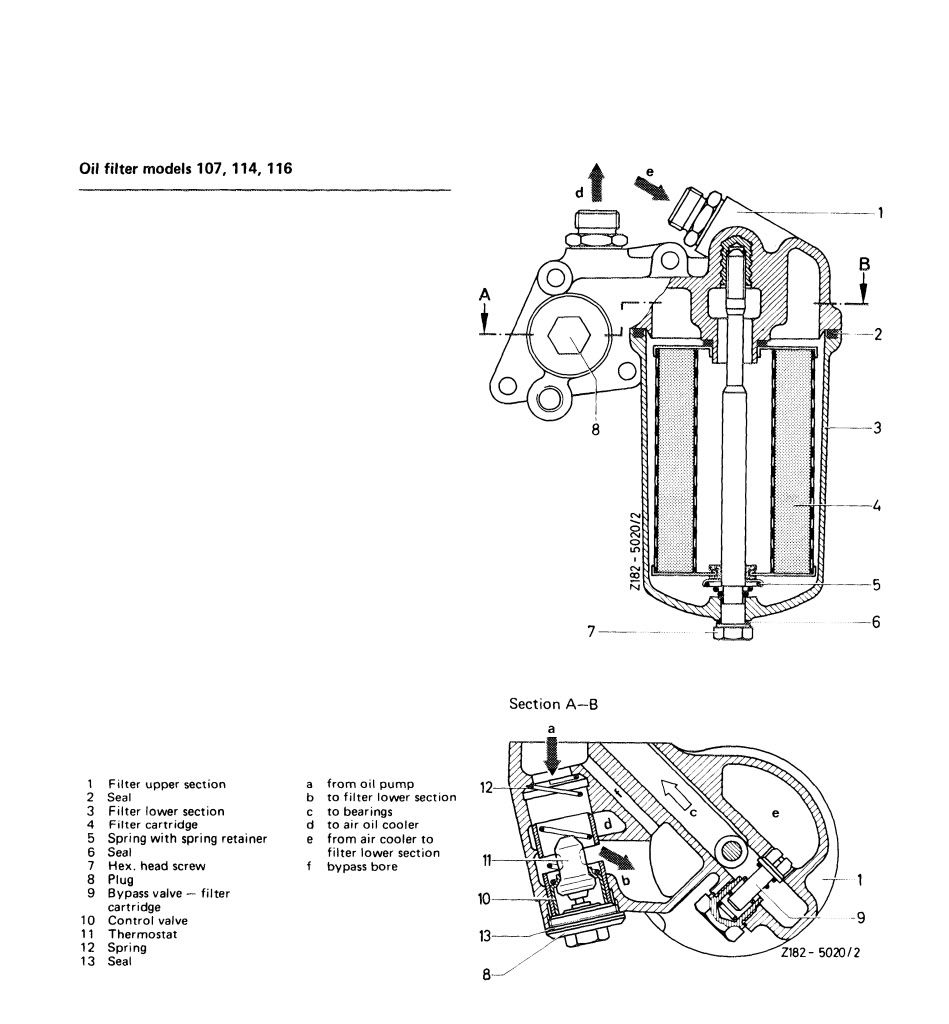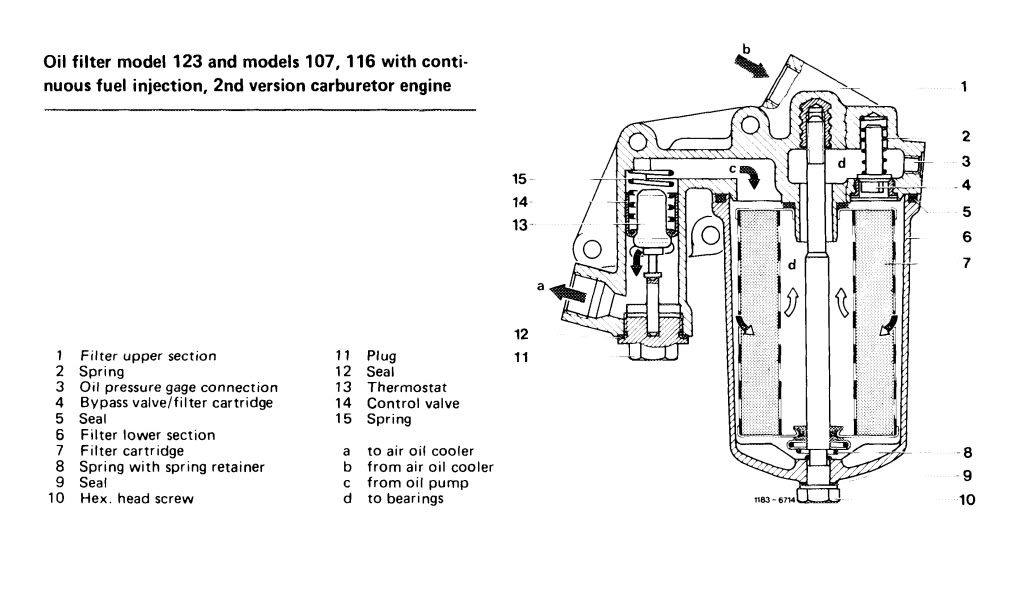|
Cloak and dagger @ peachparts.com
The following information has fallen into my lap.
I think you might find it interesting even though the author felt it was repeating what has already been said: I think it gives a bit of an insight into how Mercedes have tackled the design of other engines - even if they are petrol and not diesel.
We diesel heads like to think that we are alone and special - but the manufacturer will of course use the knowledge / components used in other products... so here goes:-
Hello Army,quite an interesting and important discussion !
Managed to find a pic of what the most recent oil thermostat supplied by MB looks like( MB 1171800175):

…this one is used in OM616,617,M110(vertical thermostat arrangement),M102,M116,M117
Source: http://www.hehlhans.de/tipp98-8.htm#b12
Just for a comparison,this is the thermostat of a M110 engine(horizontal thermostat arrangement, see pics)-A1101800075(used only on M110 engine).

The more interesting scheme is that of M110(horizontal t-stat):

Note the special cutouts of the t-stat control valve, serving to divert the oil flow as the element expands. The M110 oil filter top also has a small bore (f) from the oil channel to the filer bottom(my guess is that it serves the same purpose as the small space the OM617 t-stat valve leaves-to compensate for a possibly hindered flow thru the rad at low ambient temperatures because of the quicker cooled oil).But the small bore (f) on the M110 filter top cannot guarantee adequate flow to the filter element when the t-stat is fully open AND the outlet to the cooler is plugged. Moreover, the by-pass valve on M110 is located in the oil filter top section(and has no direct entry to the oil coming from the oil channel-the oil has first to pass thru the t-stat arrangement or ,God forbid,the small bypass bore !).Block the cooler, let the oil heat up, rev it -disaster strikes(hence the warning in the FSM).
Here is M110 filter with vertical t-stat setup(om617 t-stat):

As you suggested, although the OM616/617 by-pass valve is exposed directly to the incoming oil from the pump, it’s better with the oil radiator to remove the t-stat too (or connect the outlet and inlet bores by a tube) in order to prevent the introduction of unfiltered oil.
The schematics and pictures are of particular interest
Enjoy!
|